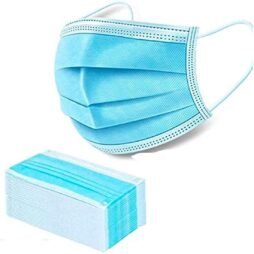A Foley catheter, also known as an indwelling catheter, is a specialized medical device used for the drainage of urine from the bladder. This catheter is a crucial tool in healthcare settings, helping manage urinary retention, monitor urine output, and provide relief to patients who are unable to void urine naturally. Here’s a description of a Foley catheter:
Description of a Foley Catheter:
A Foley catheter is a flexible, sterile, and hollow tube made from medical-grade materials like silicone or latex. It has several key components that enable its function:
- Catheter Tube: The central part of the Foley catheter is a long, slender tube with multiple lumens or channels. These channels serve different purposes:
- One lumen is used for the drainage of urine from the bladder into an attached collection bag.
- A separate lumen, which is inflated with sterile water, contains an inflatable balloon near the tip of the catheter.
- Balloon: The inflatable balloon, typically made of latex or silicone, is located at the distal end (tip) of the catheter. This balloon is designed to be inflated once the catheter is inside the bladder. Its purpose is to anchor the catheter in place within the bladder, preventing accidental dislodgment.
- Drainage Eyes: Small openings or drainage eyes are present just above the balloon. These openings allow urine to flow into the catheter and are designed to remain within the bladder, reducing the risk of irritation to the urethra.
- Connector: At the proximal end (near the outside of the body), there is a connector or hub where drainage tubing can be attached. The connector allows for the connection to a urinary collection bag.
How a Foley Catheter Works:
- Insertion: A healthcare provider inserts the Foley catheter through the patient’s urethra and into the bladder. The catheter’s tip is advanced until it reaches the bladder, and the balloon is then inflated with sterile water to secure it in place.
- Anchoring: Once the balloon is inflated, it prevents the catheter from slipping out of the bladder, ensuring it remains in the proper position for urine drainage.
- Urine Drainage: Urine from the bladder naturally flows through the catheter tube, past the balloon, and out through the drainage eyes. It is then collected in an attached urinary drainage bag.
- Collection: The collected urine can be monitored for volume, color, and other characteristics. The healthcare provider or nursing staff can empty and replace the drainage bag as needed.
Applications:
Foley catheters are used in various clinical scenarios, including:
- Urinary Retention: Managing urinary retention, a condition where the bladder is unable to empty completely.
- Postsurgery: Providing urinary drainage in patients undergoing certain surgeries where it is important to monitor urine output.
- Critical Care: In intensive care units (ICUs) and critical care settings to monitor and manage fluid balance in critically ill patients.
- Long-Term Care: For patients with chronic urinary issues or those who are bedridden or have limited mobility.







